Marine Life of Phuket – Napoleon Wrasse
The Napoleon Wrasse with it’s human characteristics is the largest of the Labridae family. It has distinctive thick fleshy lips, like Angelia Jolie, and a large hump on the head above the eyes that becomes more prominent with age. The males are bright electric blue to green, purplish blue or a dull blue green, whereas the females and juveniles are red-orange above and red-orange to white below. Mature males are recognized by black stripes along the body and blue scribbles on the head and juveniles have two black lines behind the eyes. The Napoleon is one of the largest fish on the reef with males growing to 2m in length and females 1m. It not uncommon for them to weigh up to 190kg.
Napoleon Wrasse, also commonly known as humphead and maori wrasse reach sexually maturity between 5 and 7 years. The female life span averages 30 years and males 25 years. They are Protogynous hermaphrodites. This is when females become males at about the age of 9. The factors controlling the sex change is unknown. Napoleon Wrasse are solitary but at certain times of the year when spawning is due to take place, the adults will move down current towards the end of the reef. The fertilized eggs float in the plankton until the larvae hatch and then they settle onto the substrate.
The Napoleon adults are found on steep coral reef slopes, channel slopes and also lagoon reefs varying in depth from 1m to 100m deep. The Juveniles are often found amongst branching corals in the shallows. They are diurnal feeders being active during the day and sleeping in favoured caves and large crevasses.
The Napoleon is carnivorous and is an important part of the food chain in maintaining a healthy and balanced reef. They are opportunistic predators eating crustaceans and mollusks. They are one of the few predators of the toxic sea hare and box fish. They have also been known to eat the almost indestructible crown of thorns.
Unfortunately, one of the main predators of the Napoleon is man!!! They are highly prized particularly in South East Asia and are one of the most highly valued fish in the luxury live reef fish trade. They will fetch $100 per kilo and $400 for a set of lips!!!! The Napoleon has been classified as a threatened reef fish. Their slow reproductive cycle, late maturity, longevity, predictable spawning sites and natural rarity have made it highly vulnerable to over-exploitation. In numerous countries it has become a protected reef fish making commercial fishing for it illegal. It is necessary to control fishing practices as there has been a decline in numbers and unfortunately it is not possible to breed this fish in captivity. In 1995 the Maldives banned the export of this fish and the population has increased.
Napoleon Wrasse are naturally curious and will often spend time around divers. Some have even been known to recognize individual divers and actively seek them out.
If you would like to know more about the identification of species why not sign up for on a Underwater Naturalist Specialty Course, which will enhance your knowledge and highlight the key things to look for or a cruise on board MV Scuba Adventure or MV Scuba Fun for a chance to see these for yourself.
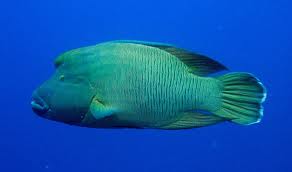
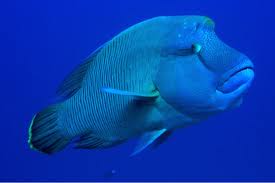
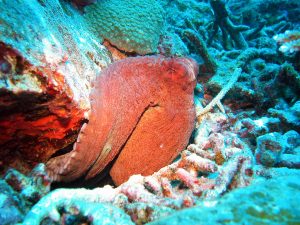

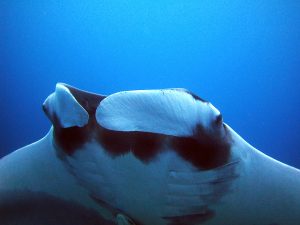
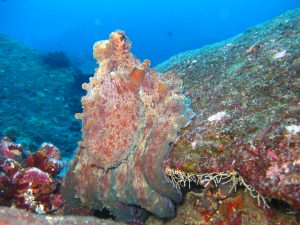


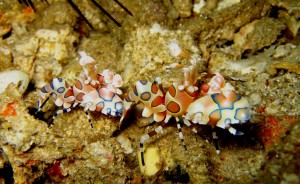





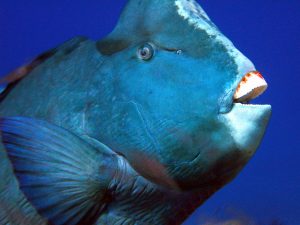





Scubacat Community